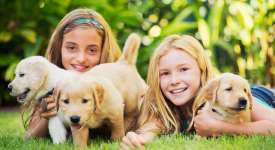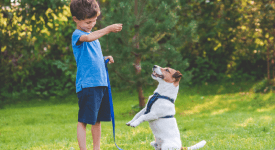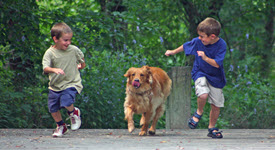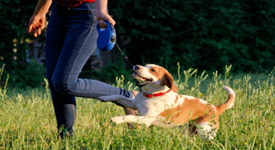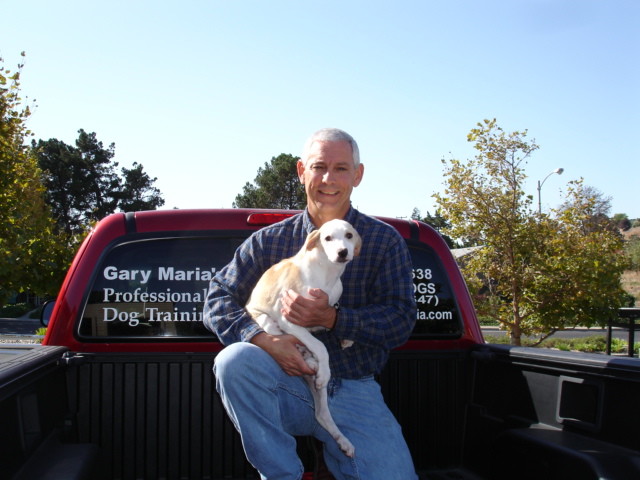We’ll discuss a few key things to watch for in understanding why some dogs (or puppies) may exhibit anti-social behavior. Many of my clients come to me to address these “signs” and “symptoms” so we’ll delve into a few root causes of anti-social behavior in dogs. Understanding root cause, let’s us address the sign in a more effective way.
Before we dive in, let’s understand first what anti-social behavior is. Anti-social behavior in dogs refers to most types of disruptive behavior that doesn’t allow for a healthy interaction with a dog. The dog’s behavior may also disturb others. For example, a dog that barks excessively can disturb both its owner and the owner’s neighbors.
Causes of Anti-Social Behavior in Dogs
Fear or Trauma
A dog that has experienced fear or dealt with trauma from past negative experiences, may lead to distrust. Just like people, a dog can become distrustful. When these experiences involve other dogs or people, the memory imprint can be strong. A dog who is fearful will often exhibit anti-social behaviors.
To dive into this topic and learn a few tips that you can implement, see Understanding Fear-Based Aggression versus Shyness in Dogs.
Lack of Early Socialization
A lack of early dog socialization occurs when a dog isn’t socialized during its formulative time which occurs between 4 weeks (28 days) of age up to 14 weeks of age.
This is the period of a dog’s life in which it is most open to learning about their environment and one in which social skill development is critical.
Early socialization exposes your puppy (young dog) to a variety of people, environments including sights, sounds and smells, other dogs, and novel situations. Early socialization, done in a safe and structured way, allows a young dog to learn how to adapt through gaining good social skills so the dog can interact well in a variety of environments and with different people, and even other dogs.
Without early socialization, a young dog can easily become fearful and remain fearful and anxious in its adult years and lifespan.
See Why Is Socialization so Important for my Puppy’s Health?
Isolation
By nature dogs are hard-wired as “pack” animals. They don’t do well when isolated for long periods. Dogs require mental stimulation and physical exercise. Giving your dog a job to deliver on and enabling the dog to deliver on its job is the best thing you can do for your dog.
Giving your dog a job builds and reinforces the pack-leader and follower relationship between you and your dog. This keeps the dog’s mental stimulation up, thus preventing it from feeling isolated, lonely, and frustrated.
Some dogs may experience separation anxiety which I write about in Why is my dog terrified of being alone
Poor Training including Inconsistent Handling
In a few of my prior articles, I have written about dog pet owners accidentally giving mixed signals to their dog as part of poor training. For example, rewarding bad behavior without knowing it will reinforce this unwanted behavior with the dog in exchange for an award, like food.
Another common form of poor training is punishing a dog who is fearful or while the dog is in a state of fear. If a dog displays signs such as growling or hiding, they are trying to communicate. As humans, we don’t always pick up on these signals. Punishment can make things worse and bring out more fear and insecurity in a dog. Instead, provide a calm and secure environment and praise and reward the dog for calm behavior or when it shows bravery. For five key signs of poor dog training, see how does poor dog training show up in your dog’s behavior and life.
Inconsistent handling of a dog refers to a lack of consistency in how an owner or handler interacts with a dog, trains, and manages a dog’s behavior. What the dog understands from this is there isn’t a clear leader-follower relationship between you and him. This can make a dog become insecure or display many unwanted behaviors because the dog thinks he’s boss.
A common mistake for inconsistent handling is using two different verbal cues for the same behavior. For example, an owner says both “sit” and “down” at different times and days, which mean two different things but both terms are used interchangeably for the same command. This creates confusion for the dog and makes it harder for the dog to know what the person wants so it can deliver on the desired behavior – sitting. This point goes back to setting a clear expectation which ultimately gives your dog a job to do.
Resource Guarding
Resource guarding is a natural, instinctive behavior in dogs where they protect things they consider valuable, like food, toys, beds, or even people, from being taken away. It can range from mild behaviors like hovering over the item, stiffening, or turning their head, to more serious signs like growling, snapping, or biting. If your dog bites, contact an expert trainer immediately. Believe it or not, this is a common situation that I work with dog owners to resolve.
Some dogs are more competitive that others – just like people! These dogs may behave anti-socially to protect things they value – food, toys, their crate, space, or even people. And dogs who have been deprived of things, can also resource guard.
To dive into why dogs resource guard and some key tips, see What is Resource Guarding and my second article Working with Your Dog on Resource Guarding.
Undiagnosed Health Issues or Physical Pain
Finally, you may consider that your dog may be experiencing a health issue. If you see a sudden and unexplained shift in your dog’s behavior, it might be time to take your dog to a veterinarian. Any change to their normal behavior is something to take seriously.
A variety of health ailments or diseases can cause behavior changes such as fearfulness, aggressiveness, withdrawing or hiding, strange barking patterns or sounds including whimpering, decreased physical activity, lethargy, loss of appetite, drinking more or drinking less water, and so on.
There may or may not be physical signs of illness or distress. This isn’t an exhaustive list but rather some things to consider when a sudden change in your dog’s behavior occurs.
